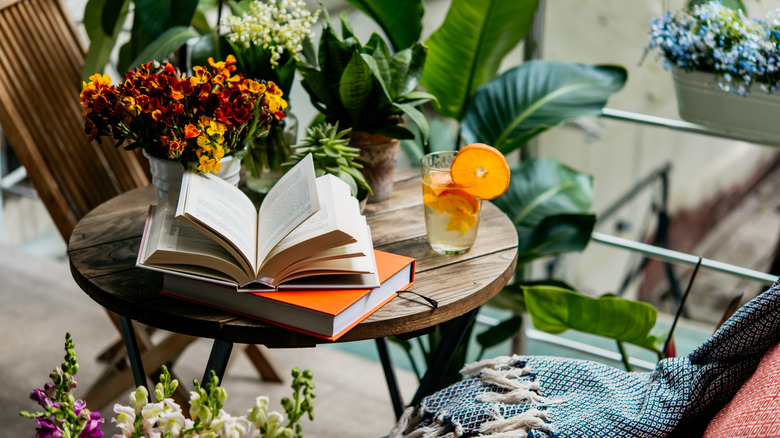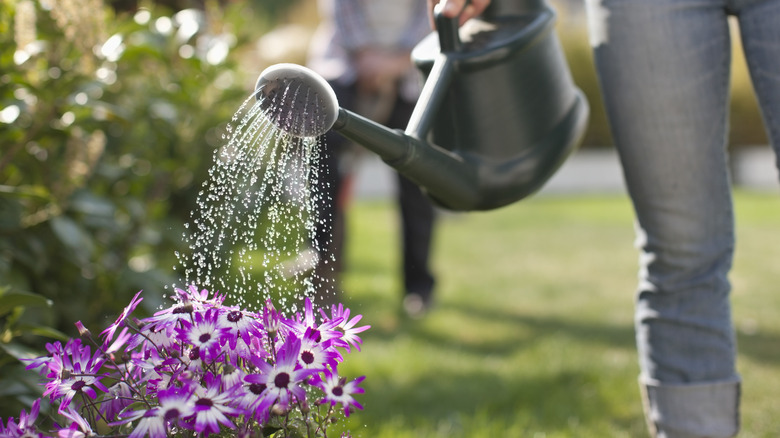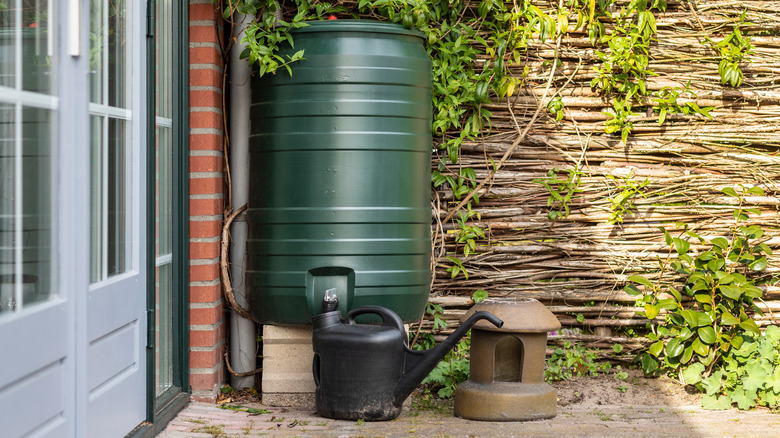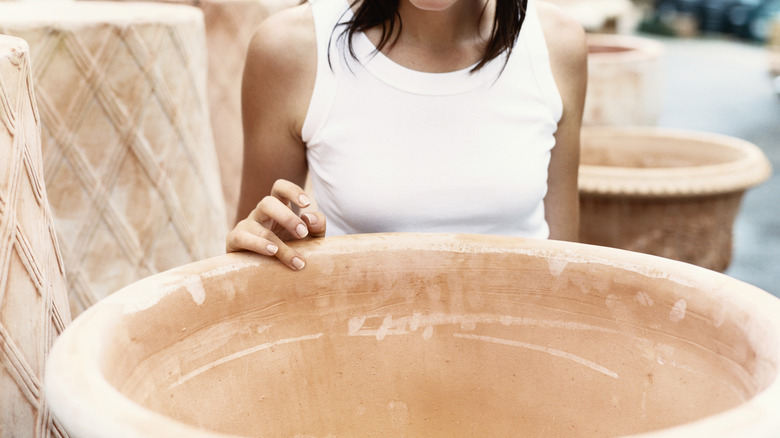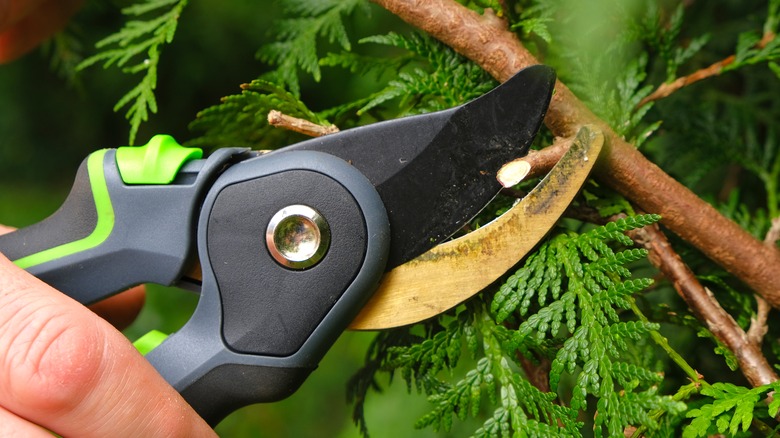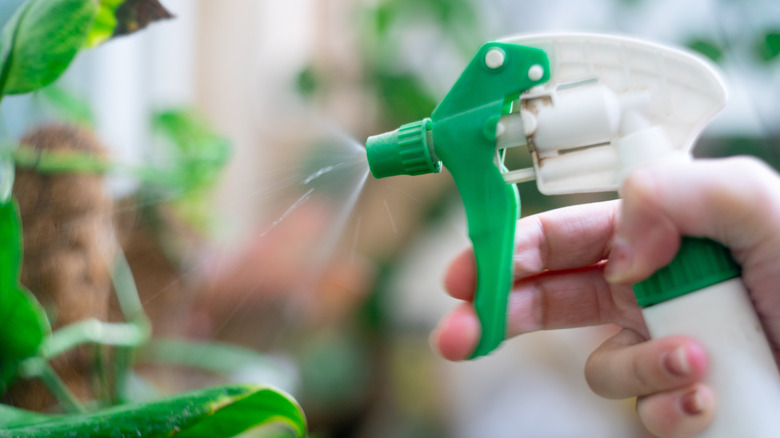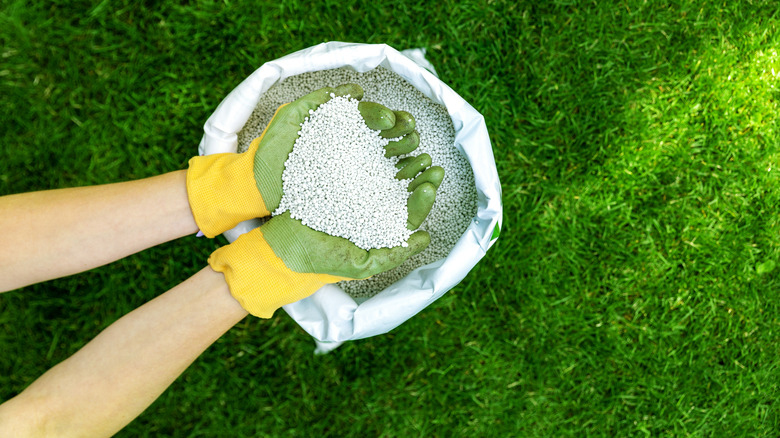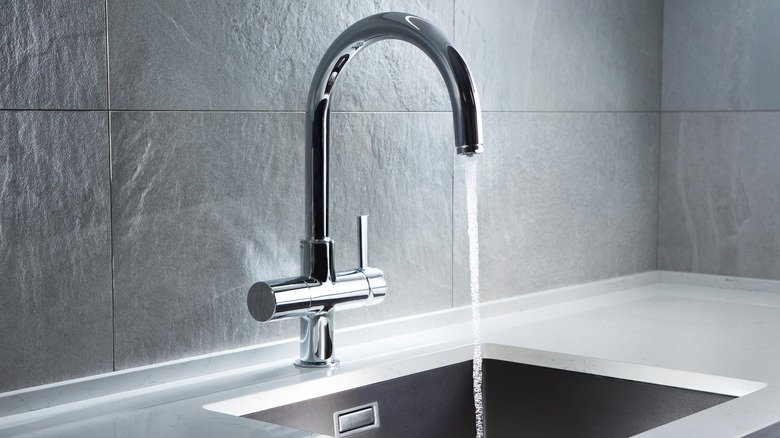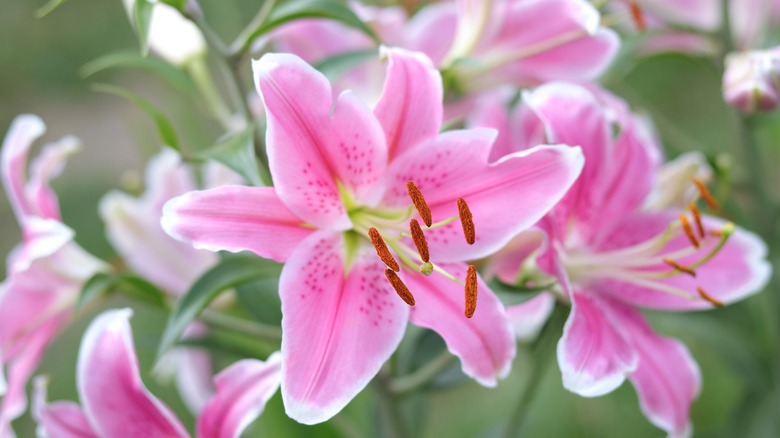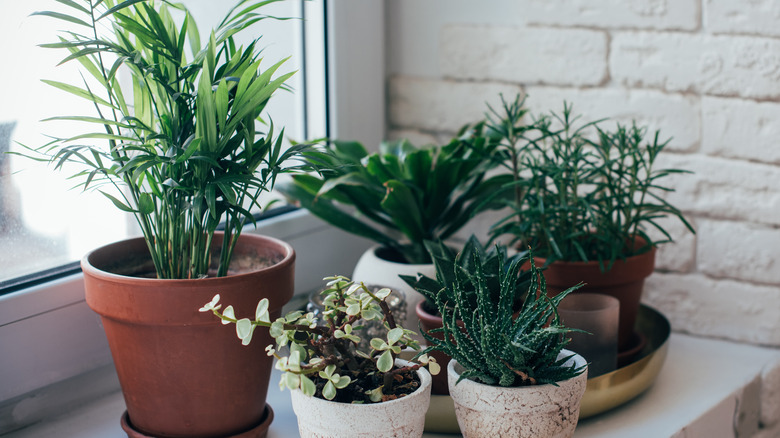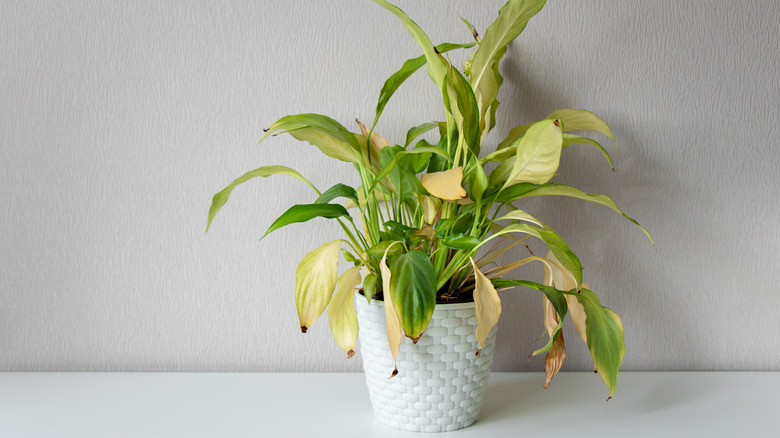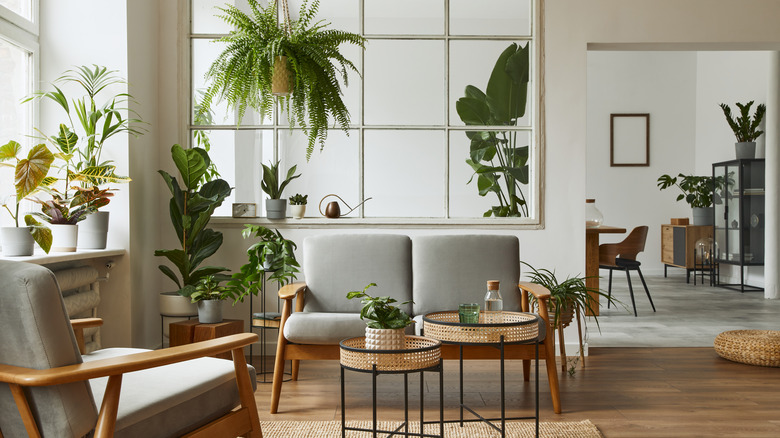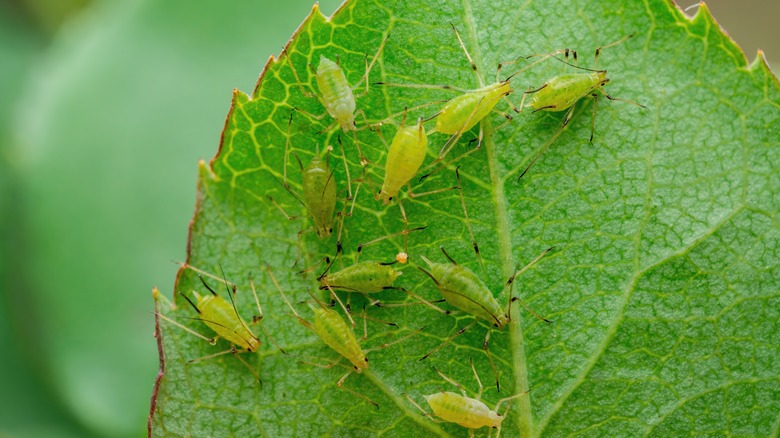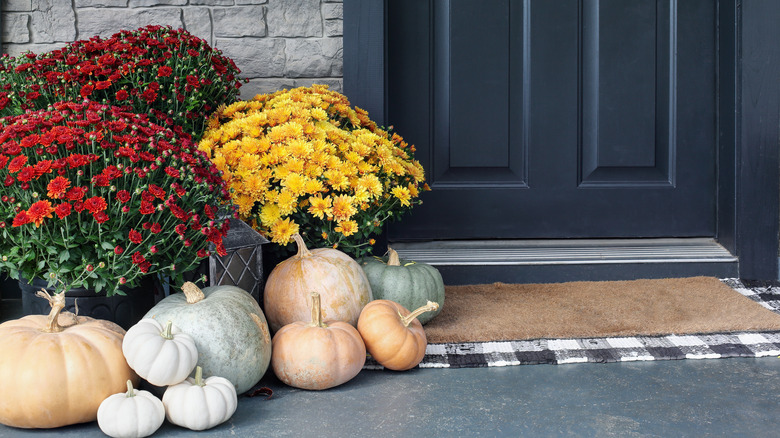The Most Common Myths About House Plants Debunked
As proud plant parents, we want to make sure we are taking the best care of our houseplants. According to The HC Companies, Americans ages 18 to 34 years old account for about 30% of plant buyers. In general, American gardeners spend at least $47.8 billion on lawn and garden items each year. That's a lot of money! The main reason so many of us are turning towards creating green spaces in our homes is because more and more, we are living in spaces without access to outdoor greenery. So, to bring ourselves more happiness, peace, and a slice of the outdoor environment, we are creating these spaces throughout our homes instead.
Having lots of plants in our homes comes with many added benefits. Plants can help us to destress after a long day, and offer privacy in shared living spaces by creating a barrier of green. They even can help boost our mood, as lively green in dreary spaces is an instant serotonin injection. Unfortunately, there is some harmful disinformation out there about plants. Here are the most common myths we need to stop believing.
Only certain people can keep plants alive
Anyone can (and should!) have happy and healthy plants in their home. If you have struggled in the past with keeping plants alive, it could be because you started with a plant that needed more specialized care. Or, you might have believed other common myths about the plant and its needs, which led to its demise. According to Mindbodygreen, having a green thumb is more a learned skill than a natural ability. Even your friend who is really great with plants and spends hours gardening on the weekends had to learn what to do at the beginning.
To get better at caring for your houseplants, you can start by setting yourself up for success. Choose plants that are easy to take care of, like a ZZ plant or Marigolds. Avoid plants like a Maidenhair fern which are really hard to take care of. Next, set aside some time to check on your plants every day. This doesn't mean watering them every day, but just looking them over. Keep notes on whether the soil feels dry, the leaves look brown, etc. Looking for patterns will improve your ability to care for your plants.
You should water your plants everyday
This myth about taking care of houseplants is unfortunately one of the most common and one of the most harmful. It can be easy to believe because other living things like humans and pets drink water daily, so we might assume we need to give our plants a drink, too. However, too much watering can actually drown your plants.
According to The Los Angeles Times, you should give your plants quite a bit of water, but less frequently. In between waterings, touch the soil to decide if the plants need more. If it feels dry, go ahead and top it up; but if it feels moist or soggy, let it be. Even during summertime, when you might think your plants are feeling really thirsty, don't overdo it. In fact, most of the water you dump onto them might evaporate before it has a chance to nourish the plant. Another thing to consider is placing plants that require similar amounts of water near each other. This way, it's easier to keep track of the needs of each plant.
If you want a bigger plant, just put it in a bigger pot
When viewed from an outside perspective, this myth might make a little sense. If you want something to grow, you need to give it room to do so, right? However, putting a plant in a pot that's too big for it is like wearing pants six sizes too big. It's uncomfortable and doesn't look great, either. Instead, you must be conservative when repotting plants, as too much room can cause root rot.
According to the Gardening Mentor, it's best to take a more gradual approach instead. Root rot occurs because when the size of the root network is too small for the size of the pot, the plant can't soak up all the water fast enough. Instead, it sits in the moist soil for hours and sometimes days, becoming soggy and eventually beginning to rot. To avoid this, when moving your plants try not to pick a pot that is more than two inches larger in diameter than the pot before it. You will go through more pots this way, but will come out the other side with a healthy plant.
Pruning is bad for your plants
Pruning plants is a lot like getting your haircut: The more often you do it, the healthier your plants (or hair!) will be. According to Stump Plants, the rules for a successful pruning are a lot simpler than you might think. You don't even need a pair of gardening shears for most houseplants; you can just use a clean and sharp pair of scissors instead. If you notice a yellowing or brown section on your houseplant, resist the urge to just yank it off with your hands. Instead, use the scissors for a clean break.
There are two main reasons why you would prune your plant. The first is because a section of greenery has died and you want to remove it before it harms the rest of the plant. The second would be that the plant is starting to get a bit unruly, so you trim it back to keep it in check. When pruning for either reason, keep in mind that for certain types of plants, like most palms and ferns, pruning the top of the plant will essentially kill it. This might be where the myth comes from, so just be sure to stick with the sides.
Misting plants is bad for them
We've all heard it before: Don't mist your houseplants because it will kill them. However, that's actually a myth. In reality, misting most plants actually helps keep them nice and clean. It only harms a certain few. According to Indoor Home Garden, misting plants that grow naturally in more tropical climates is key to their health. It mimics the humidity they would be used to out in the wild and helps keep them happy. Most homes have a humidity level of about 30% to 40%, so misting helps add to this number. In some cases, really thirsty tropical plants would also enjoy being in the bathroom, so the steam from daily warm showers can waft over them.
Some plants really, really don't like to be misted, though. Succulents are very popular houseplants, but if you were to find them in the wild, they tend to come from hot, dry climates. The key word here is dry. The same can be said for cacti and any other desert plant. So, instead of believing that no plants can be misted, just take a moment to consider the plant's natural environment and do a quick Google if you aren't sure.
Indoor plants need lots of fertilizer
Most indoor plants only need sun and water to thrive, with small amounts of fertilizer on occasion in between. According to the University of Maryland, the key when fertilizing your indoor plants is attempting to replenish their micronutrients. To accomplish this, you don't need a lot of fertilizer. In fact, sometimes you don't even need store-bought fertilizer at all. Instead, household compost can occasionally do the trick.
If you decide you need something stronger, there are many different types of fertilizer that you can buy for your houseplants, namely liquid, granular, or tablet. Be sure to read the manufacturer's recommendations thoroughly before you apply it, but in general, only fertilize your plants once a month. Even so, once it starts getting cold outside, you can lay off the fertilizer altogether. This is because the lower temperatures and early sunsets stunt plant growth, so it isn't really necessary to stimulate it.
You can't use tap water or your plants will die
Most tap water will not harm plants, especially with a little treatment. According to Gardenista, there are two main reasons some gardeners don't like using tap water on their plants. The first is that water not at room temperature can harm houseplants. For example, ice water can shock a plant, much like a snap of cold weather, while water that is too hot can easily scald it. When you draw water straight from the tap, some argue it can be challenging to strike the necessary balance.
The second protest is that there are trace amounts of chlorine in the water of most municipalities. It's small enough that we can't taste it when we drink it, but some gardeners are certain it is enough to kill houseplants. The good news is that both problems can easily be solved with just one easy action: Let your water sit out. Water will warm or cool to the desired temperature, and most chlorine will evaporate overnight. If you are worried, fill up your watering can a few hours before you intend to water your plants, and let it sit.
You shouldn't have houseplants if you have pets
Certain plants can be toxic to pets, but plenty are not. So, if you have a four-legged friend at home and still want some greenery around, you're in luck. According to the ASPCA, a responsible pet owner always checks the status of a potential new plant before they bring it home. This is because plenty of beautiful, common plant species can harm animals. The main ones to look out for in everyday life are lilies because they can cause kidney failure in cats, and tulips, which can cause seizures in most pets if ingested. Also, keep an eye out for azaleas, oleanders, chrysanthemums, sago palms, and, yes, even cannabis.
If you are looking for house plants that are usually safe to have around pets, consider purchasing a Boston fern, spider plant, ponytail palm, or a string of hearts (via Patuxent Nursery). Of course, this list of safe and unsafe plants isn't exhaustive, so be sure to look into the specific plant you want to bring home.
Plants need hours of direct sunlight every single day
When you think about what a plant needs to thrive, you usually think of sun and water. However, just like you shouldn't water your plants every day, too much direct sun can actually scorch your plants. According to My Garden Life, you have to achieve a happy medium with sunlight for your plant. A plant that needs more sun will begin to drop its leaves and lean toward whatever light there is. A plant that requires less and is being burned will start to wilt and drop leaves. Think about the visual of cooked spinach, and you'll know what to look out for.
What works for one plant might not work for another. When you purchase a plant, check its tag. Typically, most nurseries will mark the plant as needing high, moderate, or low levels of exposure to the sun each day. If this information isn't provided, or you forget to check when you bought your plant, give it a quick internet search to ensure it will thrive.
A wilted plant means it needs to be watered
A plant can begin to wilt for plenty of other reasons than just being thirsty. If you notice your plant starting to get a little limp and pour more water on it, that could be its end. According to Ambius, it's safe to assume low water is the cause at first, but before you proceed, check for a few other reasons. A secondary cause of wilting is a fungal vascular disease that infects the plant's tissue and makes it wilt. A familiar example is verticillium wilt, which occurs in some trees and most tomato plants.
Plants might also begin to wilt if their overall environment is too hot or too cold, preventing them from absorbing water effectively. If your plant is on the windowsill under the hot sun all day, try moving it a few feet back for some relief. The same could be said for a plant in a dark corner of your home — move it to a sunny spot before changing its watering habits.
Having more plants around the house improves air quality
If you want to fill your house with plants to improve the overall air quality, it won't provide the flood of relief you might expect. While plants release oxygen, having a few plants around doesn't provide much more oxygen to the room. According to the American Lung Association, having plants around is nice, but popular studies are often taken out of context. The study that most articles cite is one done in 1989 by NASA.
The scientists attempted to measure the impacts of oxygen on an enclosed space. When viewed without context, the results seem to suggest that plants increase overall oxygen levels noticeably. However, the conditions in our homes are very different from those in a controlled laboratory. The temperature is constantly changing, as is the amount of light. Even the room's inhabitants (people, pets, etc.) change from moment to moment. Because of this, the impact of plants is too small to measure. While plants absorb toxins and release oxygen on a global scale, at home, they don't make much difference.
One kind of insecticide works for all bugs
Most pests require specialized treatment, so if you find yourself dealing with bugs at home, try your best to determine what kind they are before heading to the store. According to The Yard and Garden, the words "insecticide" and "pesticide" are often used as synonyms. However, they actually mean different things altogether. Pesticides kill weeds, insects, and sometimes larger animals like birds, while insecticides only work with bugs.
From there, there are a few different forms of insecticides that you can use. You can choose from powder, granules, or a liquid spray. When choosing, it's best to know your enemy ahead of time. If you are dealing with a bug in your plant's roots, dusting insecticide might be better because it can reach remote places. However, a spray could work better if you are working with a widespread infestation because it allows you to get a large area with less effort. Armed with the knowledge of the kind of insect terrorizing your plants, as well as what works best against it, will give you the best bet for protecting your plants.
Houseplants can't be left outside
It is totally okay to put your houseplants on the porch every now and again and even leave them outside permanently if you want to. They are plants, after all; no plant is only meant for the indoors. According to Gardener's World, some plant owners place their greenery outside during summer to give them a headstart in growth before winter. You might also choose to move plants outside to make room for newer plants inside your home.
If you are worried about the amount of sun your plants will receive outside, you can get them ready by placing them closer to bright windows in your house. Keep an eye on them and monitor for signs of distress before moving them outdoors. You can also decide to hang certain plants from your porch or the branches of a nearby tree to ensure they get the correct amount of shade each day. Just make sure to bring them indoors before the first frost.
